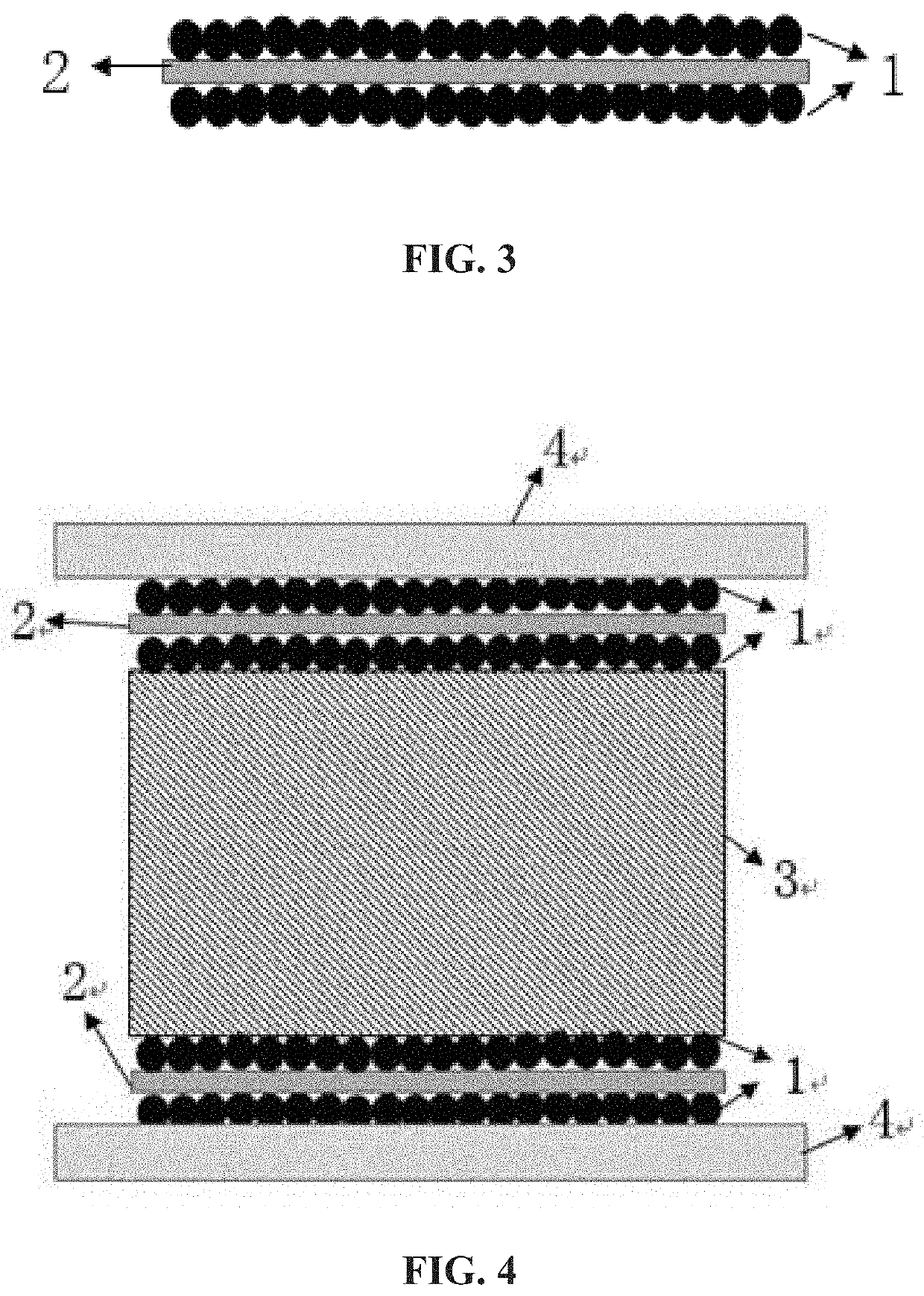Method of increasing the coercivity of a sintered nd-fe-b permanent magnet
a permanent magnet and coercivity technology, applied in the field of increasing the coercivity of a sintered nd — fe — b permanent magnet, can solve the problems of high cost, high cost, and high cost of heavy rare earth materials, and achieve the effects of improving the coercivity of a sintered nd — fe — b magnet and the utilization rate of heavy rare earth elements
- Summary
- Abstract
- Description
- Claims
- Application Information
AI Technical Summary
Benefits of technology
Problems solved by technology
Method used
Image
Examples
implementing example 1
[0024]For Implementing Example 1, an organic film having a width of 20 mm and a thickness of 5 μm is provided. The organic film is a double-sided Polyethylene terephthalate tape. Then, a powder containing at least one heavy rare earth element of Terbium is uniformly disposed on each of the opposing surfaces of the organic film, under an inert gas environment, to produce a diffusion source. The powder containing at least one heavy rare earth elements has a particle size of 500 mesh.
[0025]A sintered Nd—Fe—B magnet block, having a dimension of 20 mm*20 mm*1 mm(T) and including a pair of block surfaces extending perpendicular to a magnetization direction, is provided. Then, the diffusion source is deposited on the pair of the block surfaces of the sintered Nd—Fe—B magnet block with the powder being in abutment relationship with the block surfaces. After depositing the diffusion source, the Nd—Fe—B magnet block containing the diffusion source is pressed allowing the powder of the diffusi...
implementing example 2
[0028]For Implementing Example 2, an organic film having a width of 20 mm and a thickness of 30 μm is provided. The organic film is a double-sided tape. Then, a powder containing at least one heavy rare earth element of Dysprosium is uniformly disposed on each of the opposing surfaces of the organic film, under an inert gas environment, to produce a diffusion source. The powder containing at least one heavy rare earth elements has a particle size of 250 mesh.
[0029]A sintered Nd—Fe—B magnet block, having a dimension of 20 mm*20 mm*4 mm(T) and including a pair of block surfaces extending perpendicular to a magnetization direction, is provided. Then, the diffusion source is deposited on the pair of the block surfaces of the sintered Nd—Fe—B magnet block with the powder being in abutment relationship with the block surfaces. After depositing the diffusion source, the Nd—Fe—B magnet block containing the diffusion source is pressed allowing the powder of the diffusion source to be in clos...
implementing example 3
[0032]For Implementing Example 3, an organic film having a width of 20 mm and a thickness of 50 μm is provided. The organic film is a double-sided Polyvinyl Chloride tape. Then, a powder containing an alloy of Terbium and Dysprosium is uniformly disposed on each of the opposing surfaces of the organic film, under an inert gas environment, to produce a diffusion source. The powder containing at least one heavy rare earth elements has a particle size of 150 mesh.
[0033]A sintered Nd—Fe—B magnet block, having a dimension of 20 mm*20 mm*10 mm(T) and including a pair of block surfaces extending perpendicular to a magnetization direction, is provided. Then, the diffusion source is deposited on the pair of the block surfaces of the sintered Nd—Fe—B magnet block with the powder being in abutment relationship with the block surfaces. After depositing the diffusion source, the Nd—Fe—B magnet block containing the diffusion source is pressed allowing the powder of the diffusion source to be in c...
PUM
| Property | Measurement | Unit |
|---|---|---|
| thickness | aaaaa | aaaaa |
| thickness | aaaaa | aaaaa |
| temperature | aaaaa | aaaaa |
Abstract
Description
Claims
Application Information
 Login to View More
Login to View More - Generate Ideas
- Intellectual Property
- Life Sciences
- Materials
- Tech Scout
- Unparalleled Data Quality
- Higher Quality Content
- 60% Fewer Hallucinations
Browse by: Latest US Patents, China's latest patents, Technical Efficacy Thesaurus, Application Domain, Technology Topic, Popular Technical Reports.
© 2025 PatSnap. All rights reserved.Legal|Privacy policy|Modern Slavery Act Transparency Statement|Sitemap|About US| Contact US: help@patsnap.com


